I'm not sure that my question Title is perfect - so please allow me to explain a little further.
Here's a snapshot of some test data:
Here's my code:
Function TestDb() As ActionResult
Dim clientLocId As Integer = 23
Dim showDate As New Date
showDate = New Date(2015, 8, 14)
'showDate = New Date(2015, 9, 22)
'showDate = New Date(2015, 9, 27)
Dim orderRecs = db.Orders.Where(Function(x) x.ClientLocationId = clientLocId AndAlso x.OrderNumber IsNot Nothing _
AndAlso x.DateCompletedUtc IsNot Nothing _
AndAlso DbFunctions.TruncateTime(x.OrderDateLoc) = showDate.Date) _
.OrderByDescending(Function(x) x.OrderDateUtc)
Stop
End Function
And so here's my problem:
The rows for Order Dates 09/27/2015 and 09/22/2015 query properly with the logic above - yielding 1 row for each date requested. BUT - a query for the 08/14/2015 date yields NOTHING. I am in the -04:00 timezone now, if that matters. If I change the timezone [edit] in the row data [end edit] to -04:00 the 2 08/14/2015 rows query properly.
I have googled to try to find answers to this but have come up dry. Can someone weigh in on my problem?
[UPDATE]: Workaround Here's a workaround (for now) based on a suggestion from this thread by @PiotrAuguscik suggesting to convert the query first to a list:
Dim orderRecs = (db.Orders.Where(Function(x) x.ClientLocationId = clientLocId AndAlso x.OrderNumber IsNot Nothing _
AndAlso x.DateCompletedUtc IsNot Nothing).ToList) _
.Where(Function(x) x.OrderDateLoc.Value.Date = showDate.Date) _
.OrderByDescending(Function(x) x.OrderDateUtc)
It's a little "crusty", but it works. I sure would like to know, however, why timezones would have anything to do with DbFunctions.TruncateTime().
[UPDATE #2] Proper solution code derived from answer from Matt Johnson
Dim orderRecs = db.Orders.Where(Function(x) x.ClientLocationId = clientLocId AndAlso x.OrderNumber IsNot Nothing _
AndAlso x.DateCompletedUtc IsNot Nothing AndAlso
(x.OrderDateLoc >= showDateDto AndAlso x.OrderDateLoc < showDateDto.AddDays(1))) _
.OrderByDescending(Function(x) x.OrderDateUtc)
